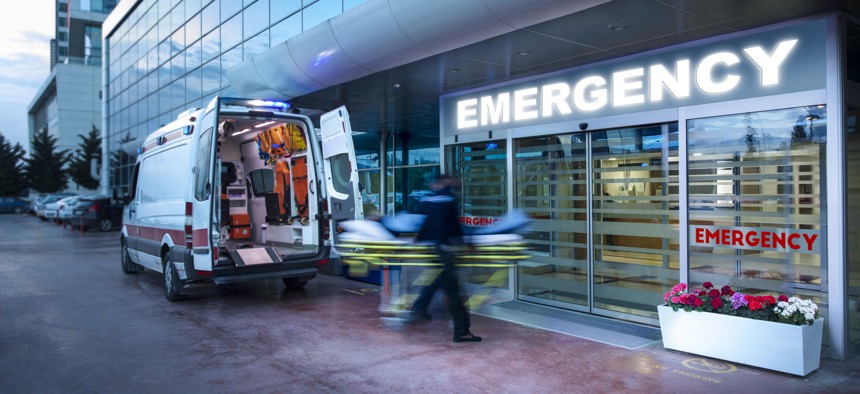VR trains responders for mass casualty events

JazzIRT/Getty Images
Conducting a disaster response training program can be costly and time-consuming, but a virtual reality simulation can train multiple employees at once and provide performance assessments.
Virtual reality simulations could help emergency response agencies train staff for mass casualty incidents faster and with less cost.
A VR program developed by researchers at The Ohio State University College of Medicine offers a portable and reproducible solution that provides users with a realistic representation of a mass casualty incident, OSU said in a statement.
With an Oculus headset and controllers, responders dive into a digital environment resembling a bombed subway station. Instructors can manipulate the scene to reduce the lighting or add smoke and loud noises to replicate a stressful environment, lead researcher and professor of emergency medicine Nicholas Kman said.
Traditional first responder training usually involves role-playing scenarios that could take more than a year to plan and requires extensive resource coordination when personnel and space availability are often limited, said Glen Keating, captain of quality improvement and outcomes at Ohio’s Delaware County Emergency Medical Services (DCEMS). The VR program takes training “to the next level,” he said.
As responders move through the VR training program, their actions and even their voice interactions are recorded in order to evaluate their performance, according to OSU. Trainees can communicate with virtual victims and apply treatment such as tourniquets, wound packing and triage tags.
Critical data points include whether responders correctly triage patients by following the standard mass casualty triage algorithm SALT—sort, assess, lifesaving intervention, treatment and transport—and how quickly they diagnose and treat injuries such as hemorrhaging, Keating said.
“We want to prepare people enough so they can at least manage the first several minutes until some additional help gets there to supplement them,” he said.
With VR training, agencies may be able to cut back on the time and cost to prepare staff for mass casualty incidents. For example, DCEMS includes about 130 providers, but they were all able to receive training in a matter of weeks “with a couple clicks of a mouse,” Keating said.
Researchers at OSU loaned the department the headset, the controllers and the computer with the training program and educated instructors at DCEMS on how the system worked, which took “maybe half a day before we got started,” Keating said.
As a security precaution, the VR system connected to a mobile hotspot so outside devices would not connect to the EMS’ data system, Keating said. Data is collected and stored locally.
The program runs on a virtual desktop app and operates through the virtual reality platform SteamVR. This allows the training responders and observers to view the same scene, Keating said.
A desktop version provides an alternative option for individuals who experience motion sickness from the VR headset. Responders who train on the desktop platform are shown screenshots of the patients’ conditions and can make decisions based on the images, Keating said.
“Due to the unfortunate number of mass casualty events here recently, whether it be shootings or explosions … we've unfortunately, with real life data, learned some important lessons," Keating said. VR allowed DCEMS to take some of those lessons and put them in a lifelike situation so other responders learn from them.
“That way they can be prepared should the unthinkable happen again,” he said.
Currently, OSU’s VR training is limited to the central Ohio area, but Kman said the team hopes to expand its accessibility nationwide by allowing other agencies to license the software.
The project was funded by the Agency for Healthcare Research and Quality.






